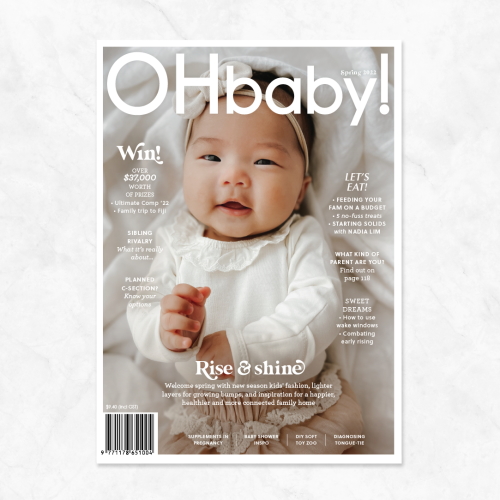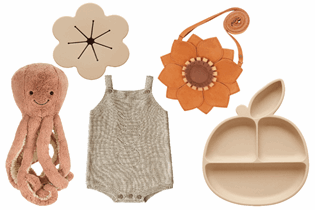What actually is 'tongue tie'?

Tongue tie affects an increasing number of babies today, and if left untreated can cause difficulties for both mum and baby, as well as in adult life. Stephanie Callaghan-Armstrong gives us the rundown.
Tongue tie, or medically termed ankyloglossia, has recently become an increasingly prominent issue in babies. In my midwifery and lactation clinics I have found myself busy assessing, diagnosing and treating tongue tie and am regularly asked questions about it.
This article aims to be a snapshot overview on what is really a major topic that scholars have studied and teach in-depth on; far superior to my humble work. I hope it may however, help readers understand the function of the tongue, what tongue tie actually is, and how tongue tie may interfere with breastfeeding and baby lifelong if left untreated.
We will take a look at tongue tie assessment, diagnosis, and treatment, and how assessing the function of the tongue is the best guidepost we have for treatment decisions. So here goes…
The tongue, while just a very small part of the human body, is a vital, very flexible muscular organ with the hugest part to play in baby’s whole life ahead from the moment they are born. Our tongues are literally covered in thousands of taste buds often seen as a bumpy surface called papillae on the tongue mucosa, or covering, that connect to nerves to tell the brain all about what we are tasting. They also contain glands that help make saliva.
It is a vital organ for speech, chewing, taste, and swallowing; and dare I say, self expression! I know most of us take those things for granted, yet if you accidentally bite it or burn it with something hot it hurts like crazy and it’s all you can think about. Tongue tie can affect all those functions or make them more fatiguing, with adult accounts of having a later-in-life tongue tie release being life-changing.
The tongue is attached to baby’s mouth by strong strands of tissue and mucosa with the frenulum anchoring the tongue at the base to the mouth and the back attaching to the hyoid bone under the chin, in the midline of the neck.
The frenulum is the main area of concern when we speak about tongue tie, as this thick band which has the normal purpose of supporting the tongue, may be tighter and shorter, or more pronounced than it should be. The usual medical treatment for correcting a tongue tie is called frenotomy (cutting or releasing the tie to free the tongue) with often immediate relief. There are also a number of other non-surgical ways to help correct and support a breastfeeding baby with tongue tie which we will talk about as well.
WHAT'S NORMAL?
When the tongue functions well, baby can move it around easily, it is pink and flat and you may notice baby poking it out of their mouth with a rounded end – cute and cheeky!
The tongue can be lifted without any hump or bunching or notching, and all this is vital so baby is able to correctly latch. When baby latches well and takes mum’s areola and nipple into their mouth and suckles, the tongue with no restrictions is able to help draw the nipple to the back of the mouth and compress the areola on their soft palate for milk ejection. When latched well, no nipple damage should occur and baby receives adequate milk from the alveoli (milk buds). This stimulation sends a message to the brain to make milk, thus a good milk supply is established and maintained.
The most common time for me to see a mum and baby with breastfeeding difficulties in my lactation consultant clinic is at a few weeks post-partum. I always do a thorough oral assessment and look in particular for tongue tie. I very often do pick one up that may have been previously overlooked. Intervention and correcting can be the difference between continuing breastfeeding or not, in my experience. Instant relief is often felt for mum, though it can take perseverance and more work to retrain baby to latch and suck correctly. Ideally, tongue tie is picked up at birth and monitored with early intervention techniques (not always requiring frenotomy as we may watch and wait) and most midwives and doctors are increasingly aware to assess for this.

GETTING A DIAGNOSIS
Assessments involve observing both the appearance and function of the tongue, this includes what it looks like when the tongue lifts up, a gloved finger in baby’s mouth to feel under the tongue and around the mouth, assessing function and mobility and checking for any restriction, plus also noting how baby sucks on the finger. A restricted tongue can be notched or heart shaped, have humping at the back, a visible tight frenulum under the tongue (which is assessed to see how elastic or stretchy it is).
Often with a tongue tie there is a lip tie too, medically named ‘maxillary labial frenulum’. Both these types of ties often go together, with the theory that back in embryonic stages, the 1-11% of babies who have tongue tie (apparently 3x more common in boys, and often genetically inherited) the midline connective tissue remnants didn’t release. Sometimes buccal ties in the cheeks are also noted.
Once I have assessed the function of the tongue I will always assess baby clinically to observe breastfeeding. Some babies, despite having a tongue tie picked up at birth, breastfeed beautifully without complications, and others have difficulty getting a deep latch with signs such as initial clicking when suckling, pain for mum, or being unable to stay latched on the breast. Depending on the overall clinical picture, we may wait and see and help new mums with optimal breastfeeding positions to maximise jaw and tongue function when latching, or refer for an urgent tongue tie release as soon as possible.
If you can imagine baby’s jaw in different positions, any forward jaw dropping position will immediately release and relax baby’s jaw and tongue. Breastfeeding baby in more ‘biological hold’ type positions where baby is tummy to tummy on top of mum allow a restricted tongue to come forward and give baby a deeper latch. The classic ‘cradle hold’ is not the optimal tongue tie breastfeeding position as it actually retracts and tightens the tongue in the jaw and creates a shallower latch.
FRENOTOMY OR 'RELEASE' PROCEDURE
It might seem super scary the thought of your precious new baby having the underside of their tongue surgically released or cut, but surprisingly it’s a very quick and minor procedure usually performed in a flash with a pair of scissors (by a trained expert!).
The tight tissue fibers under the tongue are released and will leave a diamond shaped area that blanches and heals. Usually there is very minimal or no blood loss as there are few blood vessels in the frenulum of a small baby. As baby gets older and grows it becomes more of a major procedure, so early correction is always preferable. Baby may cry but then attach straight onto the breast. Many mothers I have worked with report an instant relief of pain on latching after frenotomy.
Some practitioners release a tongue tie by laser or water laser which creates a burn. There are pros and cons to every method and it can depend on the severity and depth of the release needed as to what method is chosen. Most practitioners will prefer that baby has had the vitamin K injection to help with clotting from any post procedural bleeding that rarely arises. Some babies also have a lip tie released at the same time and others with both types of ties have the tongue snipped first to see if that corrects the issue. Infant paracetamol may be used if baby seems in pain or unsettled in the healing period after.
WHAT'S NEXT?
Breastfeeding straight after the frenotomy is recommended. Along with getting baby reviewed and assessed by a practitioner proficient in tongue tie assessment and release and positioning techniques, I am a great believer in body work for baby too, such as cranial osteopathy.
With my own babies, while none were tongue tied, osteopathy made a huge difference. My first baby girl who didn’t latch for five weeks (she was low birth weight and low tone) latched and suckled well after her first session! Osteopathy and positioning techniques too may help differentiate between what can appear in a tongue function assessment as posterior tongue tie to in fact be what is called a ‘faux tongue tie’. One expert writer on the subject suggests it is caused by prolonged muscle tension in baby’s neck and tongue in utero.
I have no doubt while many tongue tie releases are necessary, there are some that could possibly be prevented with help from a cranial osteopath or similar body-aligning practitioner experienced with infants.
Oral exercises after frentomy are also beneficial to help healing occur without the tie tethering back together. It also helps baby to learn how to re-suck correctly. A clean finger and getting baby’s tongue moving several times a day in that first week is all that’s needed.
RECOVERY
Supporting your milk supply is so important. Using a good electric breast pump helps to stimulate and maintain your milk supply if you’re having latching or feeding issues, and may also help provide expressed breast milk for babies while awaiting the procedure. Some babies who are not gaining weight will need top ups in addition to their breastfeeds until they are growing well again. Pumping may also help mums dealing with extreme nipple latching pain continue on their breastfeeding journey while they get the issue sorted.
There are natural and medical supplements you are able to take to help increase prolactin and treat a breast milk undersupply such as blessed thistle capsules and the prescribed medication domperidone. Boosting protein foods in your diet can also help. Take paracetamol and nurofen as needed for painful nipples and vitamin supplements like fish oils, vitamin C, a good multi vitamin and probiotics for optimum healing.
Damaged nipples will heal and are very vascular so while they may easily damage, they also heal quickly once baby is not continually damaging them. Nipple infections may however need treatments with an antibiotic, steroid or antifungal cream and take a while to heal.
Sometimes a few days of pumping and no latching is needed and may help break the cycle for a mum dreading the pain of breastfeeding. Once healed, and tongue tie is corrected, it can be
a fresh start again with breastfeeding.
Occasionally, with supervision by your practitioner, other options like nipple shields may help. Always get expert support when recovering from a breastfeeding challenge like this as that is your best chance of recovering and heading towards a pain-free, happy breastfeeding relationship with baby. Get help from your midwife, an IBCLC lactation consultant, doctor, Plunket, Family Centre or La Leche League – there’s lots of support out there! I am always happy for anyone to reach out to me on my Instagram page too @babylove.midwife.life.
All the best mamas, you’re doing a great job whatever part of the baby breast feeding journey you are on. I honour you. Kia kaha.
HOW TONGUE TIE CAN PRESENT IN MUM'S BREAST
+ Pain is often the biggest indicator. Baby’s poor latch can cause damage from being compressed incorrectly against the hard palate
+ Nipples bleeding, cracked, white at the ends after feeds, or misshapen
+ Nipple infections both bacterial and fungal from damage allowing entry of bacteria
+ Mastitis due to a combination of damaged nipples allowing entry of bacteria to the milk ducts and milk not flowing, sometimes resulting in a breast abscess
+ Initially with baby not being able to adequately remove milk, mum may have engorged tight shiny breasts with painful lumps
+ Low milk supply due to the ‘blueprint’ for breast milk supply not being established in the early post-partum days
+ Many mums dread feeding baby because of the pain, being disappointed, anxious, sad and frustrated about breastfeeding. This can very easily snowball and they may be at increased risk of postnatal blues and depression.
HOW TONGUE TIE CAN PRESENT IN BABY
+ Latching and staying attached to the breast is difficult. Baby may continually slip off as the tongue is unable to create optimal suction
+ Noisy feeding, clicking, coming on and off the breast, thrusting tongue, shaking head, getting frustrated with not being able to latch, milk coming out of baby’s mouth as they feed making it slippery to stay on
+ Due to low milk intake baby may have slow weight gain, always be wanting to feed, snacking at the breast, be unsatisfied, and drinking off let-downs rather than being able to have good, long well attached breastfeeds
+ Baby may have less than normal wet or soiled nappies and rather than ‘mustard seedy’ stools could be scant, frothy and/or greenish if baby isn’t getting enough milk or taking in a lot of air during feeds
+ Suckling blisters on lips
+ Windy, unsettled or colicky/reflux symptom.
Stephanie Callaghan Armstrong is a mum of five, experienced Lead Maternity Carer Midwife & Lactation Consultant and runs a breast pump rental and sales business with husband, Dr Mikey from The Barnstead in Coatesville. Find her at babymed.co.nz, and @babylove.midwife.life and @babymednz on Instagram.

AS FEATURED IN ISSUE 59 OF OHbaby! MAGAZINE. CHECK OUT OTHER ARTICLES IN THIS ISSUE BELOW

















